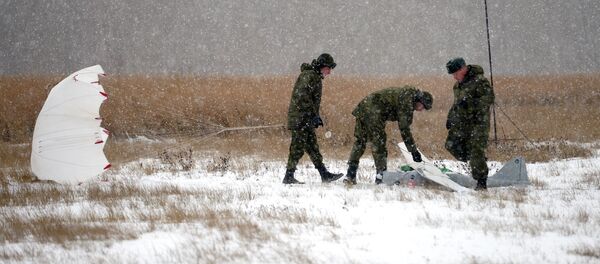Mothballed
For example, the Tu-300 drone, test-flown in 1991, could have become Russia’s first tactical attack UAV.
The four-ton aircraft was able to carry up to a ton of reconnaissance and communications equipment and bombs. It would launch via a rocket assisted take-off booster and then its air-breathing turbojet engine would activate, sending the drone into sustained flight.
Range was tactically relevant, with a mission radius of about 300 kilometers (190 miles) and a speed of up to 900 kilometers an hour (560 miles).
Sadly, the program was eventually scrapped for lack of funds.
It wasn’t until after the armed conflict in South Ossetia in August 2008 when the Russian military had to use heavy bombers to reconnoiter enemy positions, that things started to change for the better.
In April 2009 the Defense Ministry paid $12 million for a pair of Israeli-made Searcher-II UAVs, and in 2010 it signed a $300 million contract to assemble Searcher-II drones in Kazan.
Tactical UAVs
Just three years later, Russia was already mass producing Orlan-10 tactical drones capable of flying 16-hour missions 120 kilometers (75 miles) away from the operator.
Weighing just 14 kilograms, the all-weather Orlan-10 provides information gathering, reconnaissance, observation and communication and can also engage in electronic warfare.
These qualities came in very handy in Syria where the Orlans are actively used by the Russian military keeping an eye on enemy positions and registering the results of airstrikes.
“When it comes to tactical UAVs, Russia is doing fine, but we don’t have any strategic attack and reconnaissance drone and here we are lagging behind not only the NATO countries, but also the United Arab Emirates,” Igor Korotchenko, editor-in-chief of National Defense journal, told Sputnik.
He added that Russia was reportedly going to buy a number of attack UAVs in the UAE.
“I don’t think this is a good idea. We need to bring our own mothballed designs up to speed,” Korotchenko emphasized.
Hopefully, the State Armament Program for 2018-2023, to be submitted for presidential review in July, will shed light on the future of Russia’s drone industry.
The Russian Defense Ministry is already using various UAV platforms in large-scale military exercises. During one such drill held in the fall of 2015, almost 50 types of drones were utilized notably augmenting the troops’ fighting capability.
Hopefully, the State Armament Program for 2018-2023, to be submitted for a presidential review in July, will give a much-awaited boost to Russia’s drone industry.
Never miss a story again — sign up to our Telegram channel and we'll keep you up to speed!




